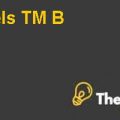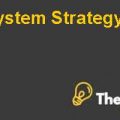
Scheduling:
There are different issues in scheduling, as well. They have the responsibility to check if any order went wrong and what steps could be taken to avoid the same in the future. The sales department wasn’t informed regarding any possible delay. Consequently, they did not understand the problem and try to handle the customer; instead they worsened the situation by buzzing about expediting the work, causing even more delays.
Along with that, the operators recorded the data in written form rather than on the information system. This created problem in proper shop’s floor reporting system. Some of the information was manually recorded while the operators only recorded their start and stop times on set-up and run. They did not take into account the waiting time that occurred at their stop. Along with that, the experienced operators did not follow the instructions hence; no one needed or complained about the problems in this system so that it could be rectified.
Overall Analysis
Bayonne was running at its full capacity and with very tight schedules. Thus, any change or variability in the customer order could result in piling up of the issues and resulted in late deliveries of other orders as well. Consequently, the queues got increased even more. The main issue here, as we can see, starts from the ganging. The production proses tries to save some set-up time and cost at that stage but as a result, the overall cost and time needed at the next stages increase. Along with that, expediting the orders causes the breaking of production runs into two parts to make the partial order available to satisfy the customers, this increases the problems for quality control department as well; in addition to the extra set-up time for the machines.
The independent working of the departments makes the information unavailable. There is no consistency in the ERP system along with the manual working and missing data adds-up to the problem. The priorities are decided by different departments when they receive materials from the previous department. The assumptions used in the information system are not correct because it does not consider important aspects of the process like the waiting time.
Number Crunching
Capacity Utilization
According to the available data, the capacity utilization chart indicated that Heidelberg press printing is the bottleneck in the process because it has 100.29% capacity utilization per center.
| BAYONNE PACKAGING INC. | ||||||
| ANALYSIS OF MACHINE / WORK CENTER UTILIZATION | ||||||
| a) Number of Working Hours in October 2011 = | 347 | Hours | ||||
| Machines | Number of Machines | Actual Hours per Machine | Actual Machine Hours | Standard Machine Hours | Machine Utilization Rate | |
| B | c | d = b*c | e = a*b | f = d/e | ||
| Composition | 1 | 255 | 255 | 347 | 73.49% | |
| Jagenburg sheeter | 1 | 279 | 279 | 347 | 80.40% | |
| Heidelberg press | 2 | 348 | 696 | 694 | 100.29% | Bottleneck |
| Bobst die-cut | 2 | 272 | 544 | 694 | 78.39% | |
| Int. Royal/Queen | 3 | 156 | 470 | 1,041 | 45.15% | |
| Int. Staudes | 4 | 179 | 716 | 1,388 | 51.59% | |
| Int. 3A | 2 | 145 | 291 | 694 | 41.93% | |
| Grand Total | 15 | 1,633 | 3,251 | 5,205 | 62.46% | |
Break even Analysis
| ANALYSIS OF BREAKEVEN POINT | |||||
| Work Center | Number of Machines | Setup Time / Machine (Minutes) | Total Machine Setup Time | Speed / Machine (In Minutes / Piece) | Speed / Work Center (In Minutes / Piece) |
| Royal/Queen | 3 | 180 | 540 | 0.002300 | 0.000767 |
| Staudes | 4 | 40 | 160 | 0.015000 | 0.003750 |
| Time Available to Staudes | 380 | Minutes | |||
| Additional Pieces which Staudes can Process | 101,333 | Pieces | |||
| Break Even Point | |||||
| x = Minutes of Both Machines in Process | |||||
| Staudes | Royal/Queen | ||||
| Breakeven Equation = | 101,333 + x/0.00375 | = | x/0.000767 | ||
| 1 / Speed/Work Center = | 266.67 | 1,304.35 | |||
| Breakeven Point (in Minutes) = | 98 | Minutes | |||
| Breakeven Point (in Pieces) = | 127,826 | Pieces | |||
Alternatives
There are different alternatives that can be applied within the company to solve the problems. Some of them might be capital incentive and thus they can be implemented over the long run, not at the current moment.
The first problem is that, to tap more markets the sales force is compromising on the margins. They should not compromise on the margins to gain volume because Dave Rand complained about the margins, but he doesn't complain about getting the volume. So, the percentage of COGS as compared to net sales will not fall down....................................
This is just a sample partial case solution. Please place the order on the website to order your own originally done case solution.










